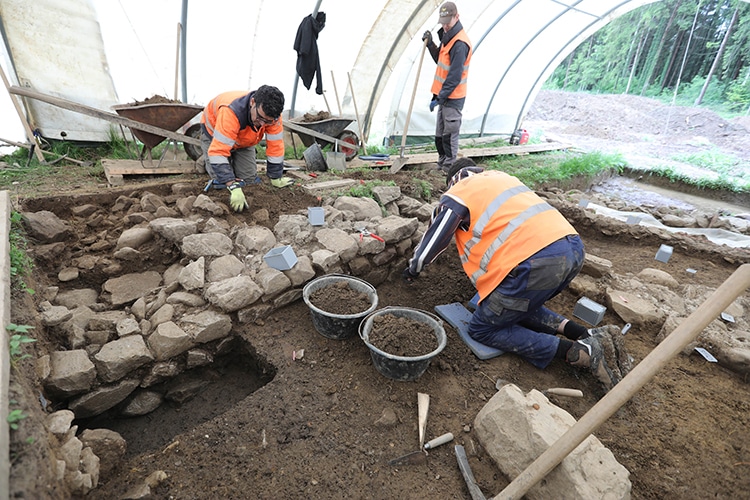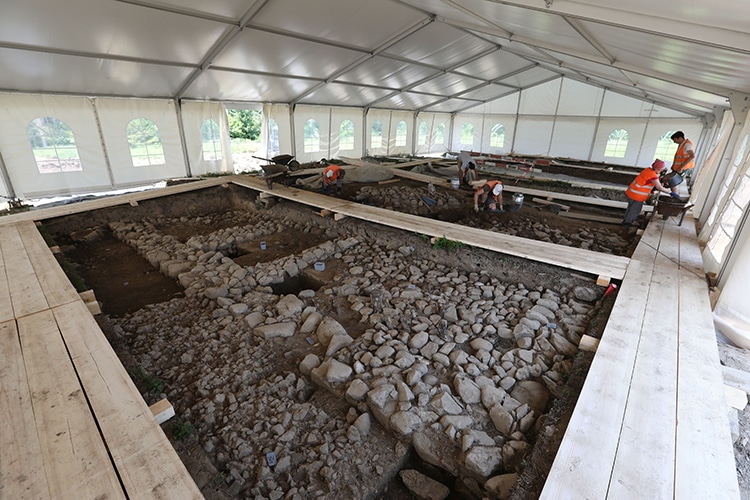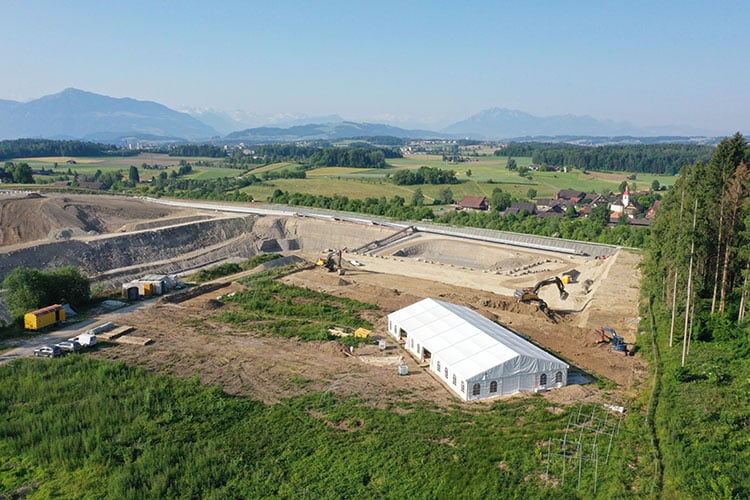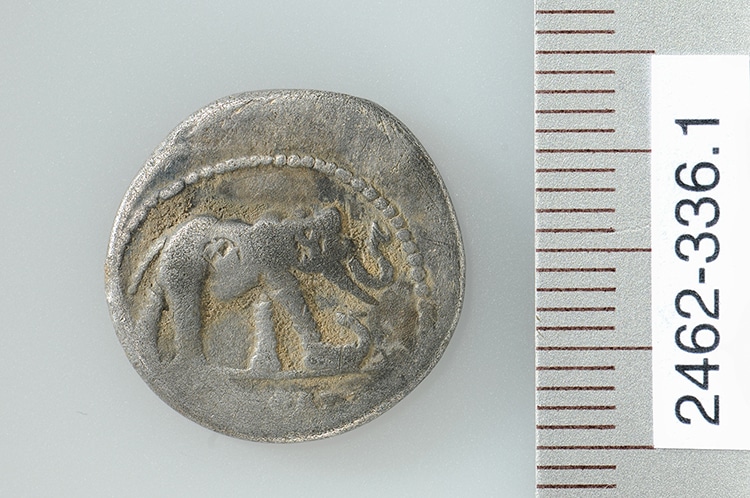2,000-Year-Old Ruins of Stone Roman Building Found in Switzerland

Excavators working on a Roman wall. (Photo: ADA Zug, David Jecker)
When in Rome, one might expect to find fabulous ruins. When in Switzerland, too, it turns out. A rare and exciting Roman archeological site has been discovered and excavated near Cham, in the Swiss canton of Zug. Dating back 2,000 years, the stone walls stood in the shadow of the Swiss Alps as Julius Caesar reigned. While the building’s use and full structure are still shrouded in millennia of mystery, their discovery has provided insight into an area of empire which is less well-preserved in the archeological record.
The building was discovered in a gravel pit with some of the ancient bricks exposed. Underneath the surface, the stone walls emerged. In clear geometric lines, the building's floor plan is a massive 5,000 square feet. The view is undeniably gorgeous, with the Alps as a backdrop. It would seem humans have appreciated the spot for millennia—Middle Bronze Age artifacts, graves from the late Bronze Age, and Celtic coins have been found nearby. The Romans in turn left behind fractured bits of glass from vessels, pottery, and coins. One coin dates from the 1st century BCE during the reign of Julius Caesar, and it features an elephant crushing a snake (or dragon).
The excavation of this site is remarkable as such sites are uncommon in pre-Alpine Swiss locations. It is also well-preserved, demonstrating the role central Europe played in imperial trade. Remains of amphorae tell stories of the trade across Europe, North Africa, and the Near East which was facilitated by Roman conquest and empire. Glass shards speak to production capacities, which were rapidly expanding commercially. As work continues on the site, it is likely more insights will emerge.
An ancient Roman ruin has been discovered in Zug canton, in Switzerland, which dates back 2,000 years to Caesar's day.

The layout of the building is easily seen. (Photo: ADA Zug, David Jecker)
Relics of the ancient past were also found on site, including coins, glass, and pottery.

The excavation site in Cham-Äbnetwald in front of the Alps. (Photo: ADA Zug, David Jecker)

Roman coins, glass, and pottery found on site. (Photo: ADA Zug, Res Eichenberger)

A 1st century BCE silver silver denarius featuring an elephant stepping on a snake. (Photo: ADA Zug, Res Eichenberger)
h/t: [Smithsonian Magazine]
Related Articles:
Art History: Ancient Practice of Textile Art and How It Continues to Reinvent Itself
Sister Duo Weaves Textured Wall Hangings Inspired by Australian Landscapes
How to Crochet: Learn the Basics of This Time Honored Handicraft
Artist Fills Forest with Life-Size Sculptures Made from Woven Rods of Willow
READ: 2,000-Year-Old Ruins of Stone Roman Building Found in Switzerland
0 Commentaires